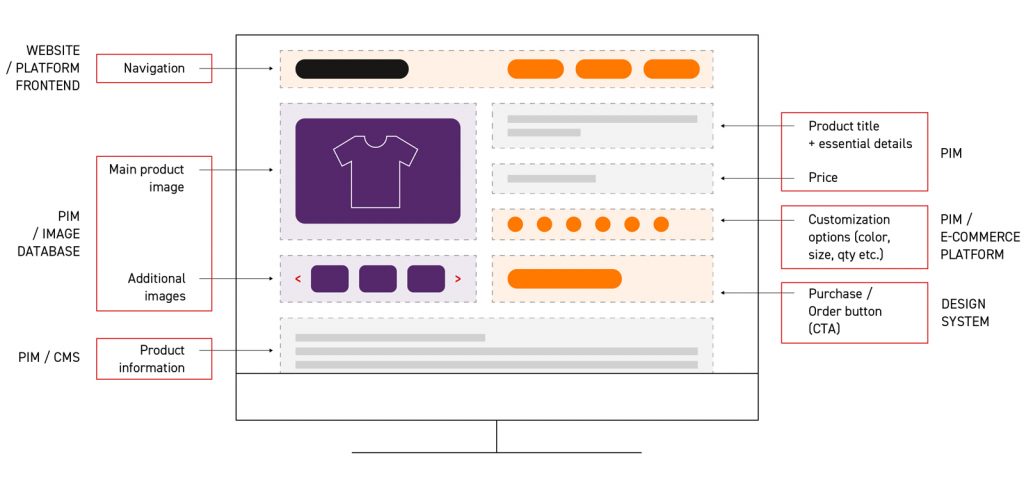Personalization in E-Commerce / The Basics
When talking face to face, personalization often happens at unconscious level. Interacts are smooth, adapted on the fly to suit the customer’s needs. Shop assistants can guide people to where they need to be and, when it comes to homing in on exactly what someone wants, it’s the fundamental secret to any good salesperson.
But online? We must adapt. E-commerce personalization trends are rapidly growing, but there is still plenty of improvements for the average online store to implement.
What is E-Commerce Personalization?
Broadly speaking, there are two areas where we can highly personalize the e-commerce experience.
Here, we will talk about all the on-page activities that we can do to better improve customer-store interactions. However, we can also personalize the marketing and inbound activities – but for the sake of simplicity, that is a topic for another day.
Why Personalization is Important
The benefits of personalization in e-commerce are manyfold. Not least of all, we’re trying to not only recreate the personal touch of an in-store experience, but use historical data and behaviour to excel where the former could not. Face to face, shoppers can get personal recommendations, be remembered as a regular and ultimately grow a stronger attachment to the store or brand… all of which is good for business 😉
- Personalization serves to help people get to the products or services they want. A faster and smoother process leads to a better digital experience.
- They also help to drive more conversions through recommendations and customer enablement. Win-win all round, right?
- Finally, THEY INCREASE SALES.
But let’s talk stats for a second. In 2018, only around 36% of companies had some form of personalization on their home page. In 2020, similar research showed that it had a success rate of around 85% – in this case, directly influencing people to purchase.
In other words: not everyone is doing it, but those that are can see measurable results.
So, How’s it Done?
One of the biggest barriers to profiling and personalization in e-commerce is the presumed unavailability of technologies. However, in an era with highly accessible e-commerce platforms, machine learning and cloud solutions, this is an outdated concern – today there are numerous readily accessible technologies to help cover a range of personalization needs.
Recommendations
Arguably the best example of e-commerce personalization, there are a few ways to enable recommendations efficiently. These range from the straightforward (showcasing like-for-like products in the same categories based on previously purchased goods) to the more complex – and arguably much more successful.
As a perfect example of the latter, recommendation engines utilize machine learning to make recommendations based on store-wide purchasing data.
- If users that purchase product A also purchase product B, there’s some indicator for recommending the latter to those currently buying the former.
- However, if the wider data shows that users who purchase A, B and C are significantly more likely to buy product D, then we can be much more confident in our recommendations.
- We can then include more variables such as geolocation. If product D is an umbrella and customers live in different climates, data can help us adapt unique strategies for each region. After all, if it rains in Germany, sales won’t go up in the US.
Behavioural Targeting & Engagement Prompts
In-store, a good salesperson can use customer behaviour to inform their own actions. There is a big difference between a customer that enters a store for the first time and one that returns to look at the same products for the 3rd time. Online stores can utilize this difference to better enable the customer.
- For new users, we can offer a general discount or incentive. Not only does this enable us to give a welcome message, but it also adds an early incentive for brand loyalty.
- For users continuing to view similar products, we can consider offering specific vouchers. Unlike new users, we’re not offering an all-encompassing voucher, but giving a little extra benefit to specific items – products their behaviour suggests they’re highly interested in.
Likewise, we can further customize websites with prompts based on certain triggers. This can include users who have stayed on site for a long period, but yet to take any specific action, users who have visited the same product multiple times or those who filled their basket, but failed to complete the purchase.
Adapting to Traffic Sources
What’s more, we can also learn a lot about users based on how they reached our store – and in the name of personalization, we can once again tweak the digital experience.
- By device – When it comes to omnichannel businesses, you’ll receive traffic from various devices. However, each may indicate different habits of their own. If your data shows that mobile users aren’t interested in the most expensive items, personalize such experiences to showcase more affordable products for that device – even if the same user appears on multiple devices.
- By source – If we have active campaigns on certain categories, for instance, then any in-store advertising or promotions should be personalized around that original message – and consequent user expectation.
- By channel – You may find that different channels cater to different audiences. Here, you may want to personalize the experience just as we would with the source, but the source should come first. I.e, we can filter all Pinterest users, but those from specific campaigns have stronger indications for us to act on.
- By geolocation – stores that operate internationally can tailor the promotions and products displayed on their home page to match the weather and season of the user’s country. They can also further prioritize products in line with local values. (You’ll have more success selling baked beans in the UK than in most other countries 😉 ).
For channels and sources, we also have the added benefit of using UTMs from our marketing campaigns. This is an important – but thankfully very easy way – to implement basic tracking for personalization purposes.
We can also use this tracking to feed our own data models. When we see certain channels or sources prefer certain products, we can customize the page accordingly.
Dynamic Pricing
The holy grail of any e-commerce personalization engine, dynamic pricing changes the very price of a product or service to ensure more sales. Unfortunately, this is something still only utilized by the highest e-commerce leaders, but readily available dynamic pricing technology is opening up this competitive advantage. It’s also something highly prevalent in the travel sector, with hotels, flights and other travel options all changing on the fly (terrible pun intended) due to availability and demand.
However, we should also stress that dynamic pricing has many risks, too. Prices that change too much can deter customers. Advertised prices are often viewed as a promise – while customers are always happier to see something cheaper, nobody wants the surprise of higher costs.
Dynamic pricing is best used to find the equilibrium between supply and demand – not for extorting more money per product from customers. The latter approach will receive short term gains at the cost of long-term loyalty and support. There are of course exceptions to this, such as raising the price on very limited stock, but pricing strategy is a separate discussion entirely.
Account Personalization
Finally, when your e-commerce website or store also acts as a web portal, you have the opportunity to directly target people. With a registered user, you have plenty of information to utilize:
- Their name. Even something simple as replacing the default home message with something that includes their name can greatly enhance the commerce experience.
- Their orders. Whether it’s a repeated order, a preference for certain categories or more, we can customize what’s shown to adapt – i.e, via recommendation engines.
- Their milestones. Regular customers that make frequent orders can be rewarded not only with a point-based system, but with recognition for their 100th order, or even a special voucher or discount after a year of shopping with you.
Putting it Together
When we mention the likes of machine learning and recommendation engines, it’s clear that a lot of the work happens in the backend. From the frontend, we’re simply connecting these insights with dynamic content, which has long been readily available.

For the home page, we can integrate these backend features with dynamic text, chosen based on either key UTMs (like geolocation) or returning visitors that are logged in. For product pages, we can rearrange the content on key landing pages, such as categories, in a similar fashion. The products themselves are not disturbed, as they’re bundled together in your PIM system, but the server displays them according to data we feed into the backend, and served individually for the user.
Personalization is not an overnight implementation. However, by starting with the resources available already, such as historical data and traffic sources, we can begin to adapt. Then, more advanced solutions such as machine learning can take this even further.








